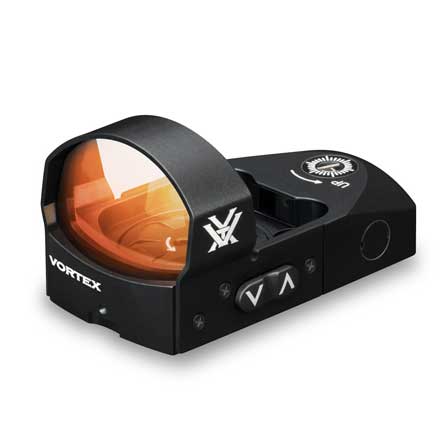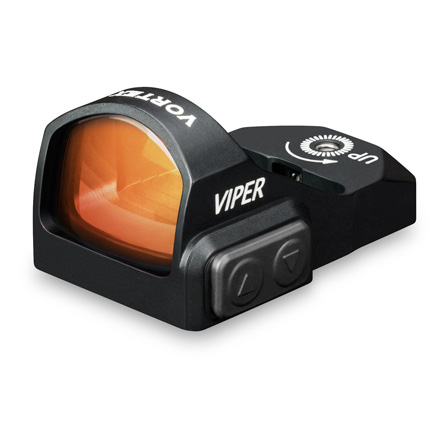
While red dot sights being used on the top of pistols are not necessarily a “new” concept, they are defiantly becoming a rapidly growing trend. Competition shooters have used them for over a decade. The obvious increase in speed and accuracy made this technology a simple decision for a LOT of competition shooters. There are even complete separated divisions in the competition world that caters specifically to optics users, as it is simply unfair to allow them to compete in classes without them. So, they are a proven technology. Do they belong on defensive pistols, is the question we will be mostly looking at in this article.
As with anything, the technology evolves over time, what used to be large even bulky frame mounted set-ups are now surpassed by slide mounted micro-optics with an entire host of different sizes and shapes available. Most handgun manufactures now offer an option that is either “optics ready” or offer an optic as part of the pistol’s purchase as standard equipment.
Can I run out, buy one, mount it to the pistol and be a world class pistol shot? Well…NO. The inherent accuracy and speed does accelerate with the use of one. Now, mind you, running a pistol with an optic on it, does require some practice and dare I even say qualified training to accomplish well. The mechanics and sight picture of using a red dot sight on a pistol is not the same as the mechanics and sight picture of simply using the open sight, “front sight” discipline. Most of these micro-optics have slight geometry changes causing the operator the need to adjust how they manipulate the pistol for a proper sight picture. This is where practice and training is necessary to be introduced into the discussion. Once you have acclimated and gotten used to having an optic on the pistol, they work quite well.
 Red Dot Optics Like this Viper Red Dot With Weaver Mount have Become very Popular
Red Dot Optics Like this Viper Red Dot With Weaver Mount have Become very Popular
For me, having the availability of a red dot optic on my pistol has turned my pistol from something I shot at things with, into something I now shoot things with. I do however recognize that they are not necessarily for everyone or ideally suited for every shooting circumstance. There are some critical things to consider before we jump on the band wagon and put an optic on our carry pistol. So, lets discuss the Pro’s and Con’s
Pro’s
SINGLE FOCAL PLANE – Using a red dot sight on a pistol allows for “single focal plane” shooting. Our eyes can only focus on one object in distance at a time, with open sights we have always focused on the front sight, allowing the rear sight to be slightly blurry. With a defensive situation we must focus on the threat. The optics offers an advantage here as it allows for a holographic presentation of the aiming point that is superimposed on the threat, allowing for a much better target identification under stress.
FIELD of VIEW – With a wider, less restricted field of view that the optic on a pistol allows with a common center hold on the target we are no longer obscuring the bottom half of the target of forcing a 6 O’clock hold.
ACCURACY – I find a 40% accuracy increase while using a red dot sight on a pistol. I attribute this to a much easier target indexing over distance and there is a much finer aiming point with the reticle than the profile of the front sight. Aim small miss small.
SPEED – There is a noticeable acceleration in speed to target with an optic on a pistol, this is simply undeniable. Transitioning from target to target is simpler when you no longer must be concerned with aligning both front and rear sights. The parallax free nature of most quality optics makes this a thing of the past.
Easy for OLD EYES – Many shooters who experience difficulties achieving a proper sight picture with open sights, often find a renewed confidence in their handgun use by adding a red dot sight optic to the top of their favorite pistol. Even if the red dot aiming point is not super crisp, the simplicity of sight alignment with an optic brings back the first shot hit confidence.
CON’s
Durability – While these optics have come a long way in their construction, we are asking a great deal of an optical mechanical sight to withstand the violent recoil and vibration generated from modern light semi-automatic firearms. Optics are inherently less durable than the simple iron sights, with glass glue and solder and electronics mounted in the epicenter of the recoil machine. Improvements to these optics happen nearly daily as we push them, manufacturers improve and fix the problem areas. Not to mention the mounting screws and wide array of optic plates in the mix of “additions” to the firearm. Even the highest end optics experience issues. So as this technology evolves, expect some form of durability issue to arise over time.
PRICE – we have seen items enter the market from the under $100 novelty category to the over $800 professional use items. In this discussion, heavily weigh how you will use the optic and let your budget drive your choice.
Reticle Wash or FLARE – With any holographic reticle, the ambient light plays a substantial role on how the reticle of any given optic may show these characteristics. In bright sun, the LED generated reticle may wash out, this is not necessarily a failing in the optic, but the expectation you have of using it in bright sun. For this reason, I recommend a set of suppressor height sights used as a necessary back up plan. In low light conditions the reticle or dot may exhibit a “flare” showing itself as a star bursting effect on the edges. When this happens it typically means that we have set the brightness too high for the light conditions. This is an easy thing to remedy, by simply turning down the reticle brightness on the optic. Some optics offer an ambient light sensor that will attempt to auto adjust the reticle brightness to the light conditions it perceives you are in. If you shoot from cover to a bright lit area, this will cause a host of other issues as the optics is confused as to what you need from a brightness perspective as it is reading the light from where you are, not where you shooting to.
ENVIRONMENTAL ISSUES – Rain and condensation can contribute to a poor reticle presentation. Open style optics are designed to allow for a cost-effective optic use in favorable condition. Some manufacturers are moving to an enclosed system to help assist with this but be mindful, if water or fog settles on the reflex lens, the holographic reticle may be distorted causing the presentation of the reticle to shift in POI (Point of impact).
ASTIGMATISM – Red dot sight technology show cases this often mis-diagnosed or operator ignored optical condition in the human vision. With astigmatism the human eye may perceive a dual reticle or even a ghosting of the reticle, often confused with “flare”. If when you review the reticle in the optic, there appears to be two or a mis-shaped reticle, you may want to see about getting or adjusting your corrective lenses.
BATTERY LIFE – Size matters. The smaller we make the optics to fit on tiny sub-compact type pistols, the smaller the power cell needs to be. While the best of the coin cell (1632 or 2032) batteries offers a great solution. They only offer a 4-to-6-month life depending on brightness level you run the optic at. So, be prepared to change batteries often.
With all the above in mind, should you put one on your defensive handgun? There is a good deal to consider. If you are mindful and dedicated to review, training, and maintenance to your equipment, maybe. If there is a hard position of being intolerant of any potential failure point in your defensive equipment, probably not.
For me, I humbly would offer yes, the functional PROs outweigh the CONS’s. The shear accuracy increases and speed to target combined with the large field of view for target identification make using an optic on my defensive pistol an easy decision. Now, I will caveat that statement by saying, I will also upgrade my pistol with suppressor height sights to eliminate my worry of battery life and other various durability concerns. Once I have made the decision to mount an optic on my pistol and found the right one that fits my budget and sized correctly for my firearm, the search for a proper holster and some training begins. But that is a set of topics for future articles.








